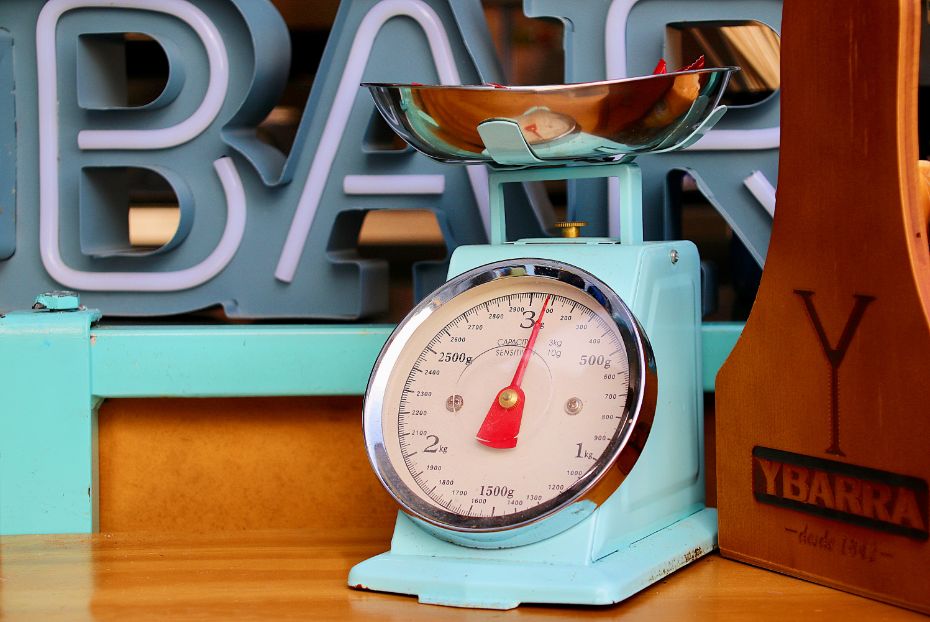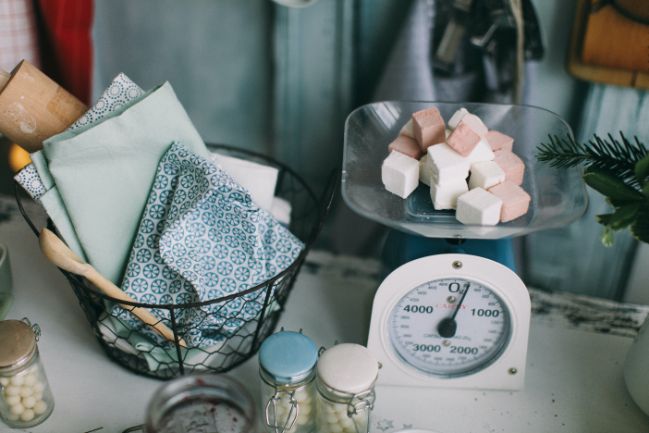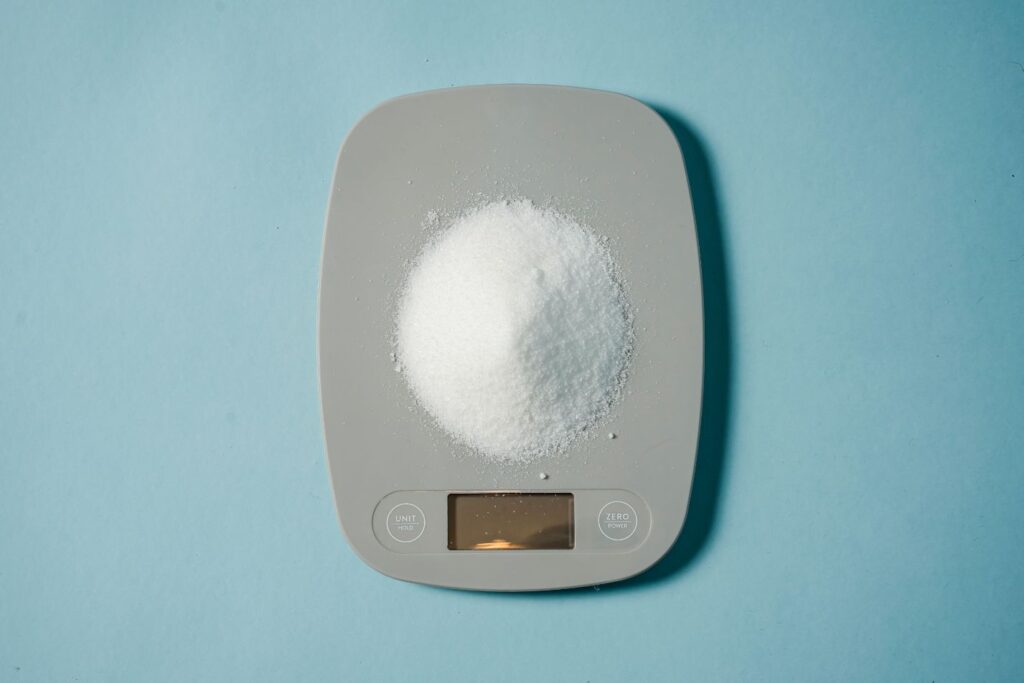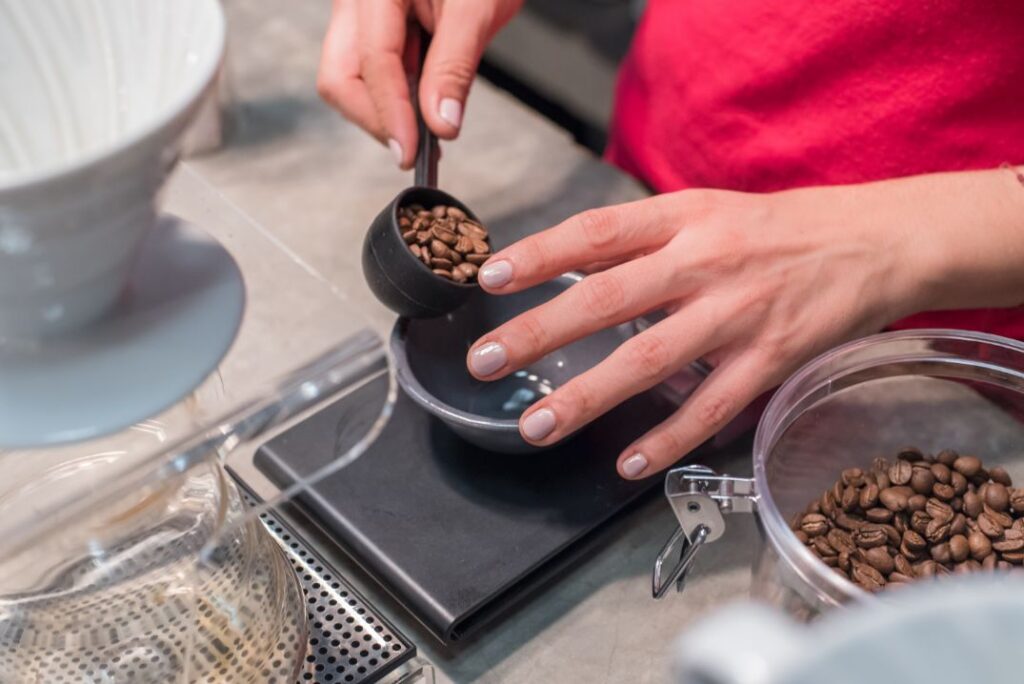
Learn how to read ounces on a kitchen scale in this article, along with the benefits of using one.
Instead of weighing with the measuring cup, the kitchen scale provides a much more accurate calculation. They come in digital and non-digital design options. Using a digital kitchen scale, you can accurately and quickly add your ingredients to your mixing bowl without using additional cups and dishes.
Allow me to demonstrate how simple it is to use a kitchen scale for baking.
How to Read a Food Scale?
Learning how to read a food scale will enable you to determine the appropriate serving size for the foods you consume. It enables you to reduce your caloric intake naturally and shed pounds.
Step 1
Choose the type of scale you want to use for food. Because it provides precise measurements without the need for guesswork, some people decide to purchase a digital scale. Others employ spring-balanced scales.
Focus your search on a scale with legible measurements that fits within your price range, has a bowl or cup for holding food, and is simple to clean.
Step 2
Peruse the instruction manual that came with your scale. Basic scales don’t need manuals, but some digital scales have more sophisticated features like calorie counters and nutritional information. You can better comprehend the key components of your scale by reading the instructions.
Step 3
Depending on the type of food scale, this may be as simple as turning the scale on and waiting until the display reads “0.” For spring and weight scales, you might have to set a knob to 0.
Step 4

Weigh the bowl or jar you would use to store the food before using it. You need to know the weight of the jar so that you can deduct it from the amount the scale registers when you add food to it. You will receive more food as a result of the response.
Follow the manufacturer’s instructions to use the button that measures the container instantly on some scales that come with a pot.
Step 5
Put the jar containing your food on the scale. Whether using a weight scale or a spring scale, give the scale a few breaths to settle before reading the weight. Using a digital scale will also allow you to see your weight.
You will need to enter a unique code into the scale that identifies the kind of food you are measuring. To read a food scale, adhere to the manufacturer’s guidelines.
Step 6
If necessary, subtract the container’s weight from the total weight measurement.
Tips When Using the Kitchen Food Scale
- Keep the scale at zero for calibration. Small differences matter when you’re measuring out portions of an ounce.
- A bowl is sometimes attached to kitchen scales. Your ability to weigh food will be constrained to that which will fit in the bowl as a result.
- Make sure a kitchen scale will weigh the amount of food you will most likely need before making a purchase. Between 2 pounds and more than 20, a scale’s maximum weight range is possible.
Reasons to Use a Kitchen Food Scale

Why should you use a kitchen food scale? Here are some reasons:
Precise and Accurate
The precise and accurate measurements provided by scales help with portion sizes. A balanced diet emphasizes portion control, which food scales can help with. Check to see if your chicken breast, broccoli, and a cluster of blueberries all weigh the recommended amount before you eat them.
Putting your snacks and sweet treats on a kitchen scale is the simplest and quickest way to determine whether you consume the proper portion size for each meal.
Calorie Counting
They aid in calorie counting and help determine serving sizes. Measurements of food can help provide more accurate calorie counts and statistics on serving sizes than the nutrition label placed on your fruit snack bag. The serving size information is typically accompanied by an estimated weight on the packaging.
The label on your bag of fruit snacks may indicate that every 31 grams contain 100 calories. But it turns out that the 11 pieces weigh 38 grams when they are placed on a scale. When calculating calories, there is a significant difference.
Make It Easy to Cook and Bake
Using kitchen scales makes baking and cooking much easier. For example, complicated recipes that call for a precise amount of flour or salt can benefit from the accurate measurements that food scales offer. The volume measurements you get from a measuring cup are also inferior to those from kitchen scales.
You can accurately measure components of a meal that a measuring cup couldn’t, such as a few sliced onions or a bowl of fusilli noodles. A food scale is also less work and requires fewer dishes than a set of bulky measuring cups.

Help Form Healthy Eating Habits
Weighing your food, encourages a healthy diet and could lead to weight loss. With food scales, you can lose weight. Controlling portions and serving sizes is just the start. Weighing your food helps you stay accountable for the nutrients you give your body.
If you’re trying to lose weight, using a food scale makes it possible for you to maintain a healthy diet and regular exercise. In fact, you might even discover that you eat vegetables more frequently because it is much simpler to determine the precise serving sizes of vegetables than it is to do with a pile of frozen potato chips.
What to Ensure When Buying Kitchen Scales?
Kitchen scales with glass platforms should be avoided as they are fragile. They frequently cost more and are less reliable than scales with metal platforms. Choose models with rubber feet that won’t slide around.
The digital scale is held in place by four rubber studs that stop it from moving around slick counters.
What If I Need Grams Instead of Ounces?
Many people have recently requested my recipes in grams rather than ounces because that is the unit of measurement that is used in their nation. I am gradually changing all of my recipe cards to include grams as well, but a kitchen scale ought to have the ability to switch between grams and ounces.
Additionally, it’s fairly simple to change recipes that are written in ounces to grams.
1 ounce = 28.35 grams. So, to calculate the weight in grams for an object weighing 8 ounces, multiply 8 by 28.35. Additionally, you can convert recipes to grams using a variety of online metric calculators.
Conclusion
There is no doubt that your kitchen needs a good food scale. Food scales, which are crucial for preparing a batch of proteins and calories, provide more accurate measurements.
It’s simple to read kitchen scales with backlit displays. High-precision measurements are a benefit of their svelte design. Make sure to purchase digital scales capable of measuring grinds.
